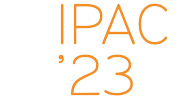Speakers
Description
A crystal-based hybrid e+ source could be a good alternative to conventional sources based on the e- conversion into e+ in a thick target and is currently under consideration for the FCC-ee [1]. In a hybrid source an e- beam crosses a thin oriented crystal with emission of channeling radiation, featuring enhanced photon flux w.r.t. Bremsstrahlung [2]. It results in an increase in the number of e+ produced at the converter target positioned after the crystal. This allows to reduce the converter thickness and decrease the deposited energy and Peak Energy Deposition Density (PEDD) in it. Here we present the optimization of the hybrid source for the FCC-ee case performed via Geant4; a W crystal was selected as radiator and different configurations were considered; with/without collimators or with/without a sweeping magnet between the crystal radiator and the converter target. In all these cases, a huge reduction of PEDD in the converter was shown. The Geant4 model was benchmarked with experimental tests at DESY TB with 6 GeV electrons [3] and CERN PS&SPS with 6 and 20 GeV e-beams. The tests were performed for either the W crystal and other alternative crystals, e.g., diamond or Ir. The simulation tool is now ready for more sophisticated simulation of the full chain of the injection system.
References
[1] I. Chaikovska et al 2022 JINST 17 P05015
[2] R. Chehab, V. Strakhovenko and A. Variola, NIM B 266 (2008) 3868
[3] L. Bandiera et al., Eur. Phys. J. C 82 (2022) 699
| I have read and accept the Privacy Policy Statement | Yes |
|---|

